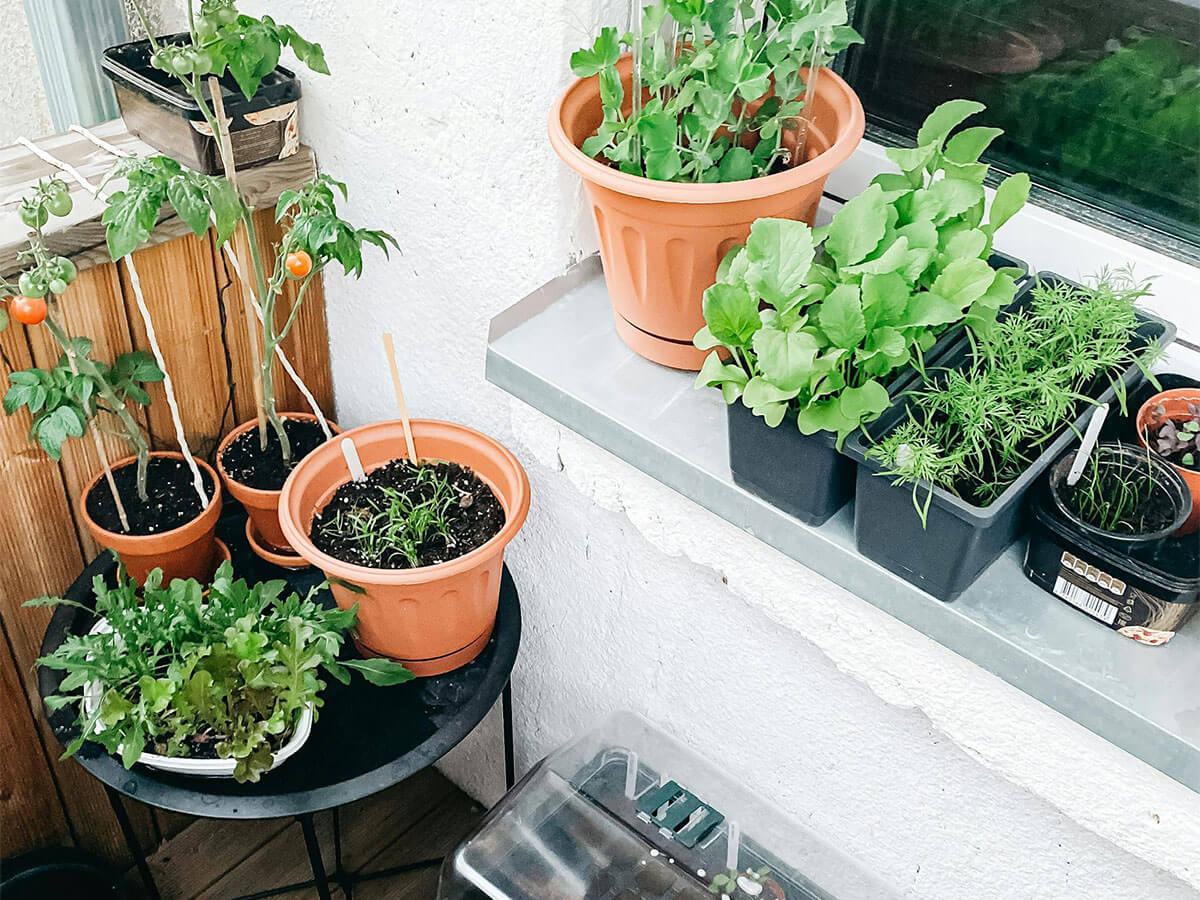How to Plan Your Small Urban Garden for Spring During Winter
September, 2024 |While winter may seem like a slow season for gardening, it’s actually the perfect time to start planning your spring garden! With a little forethought, you can make the most of your small garden space and set yourself up for success once the warmer weather arrives.
You’ve protected your container plants from frost, added some mulch and protected tender perennial plants… Now it’s time to plan for Spring!
Related Read | 11 Must-Do Winter Tasks for A Small Garden
Here’s a step-by-step guide to help you get ahead with your spring garden planning.
1. Reflect on Last Year’s Garden
Before diving into your new garden plans, take a moment to reflect on last year’s garden. What worked well, and what didn’t? Did certain plants thrive, while others struggled?
This is the perfect time to assess your successes and challenges so you can make informed decisions moving forward. Jot down your thoughts and use them to guide your planning.
For example maybe next year you need to add more shade tolerant plants to one corner, or maybe you plan on adding a compost bin!

2. Choose What You Want to Grow
Winter is the ideal time to dream about what you want to grow come spring! Since space is often limited in small gardens, it’s important to be selective.
Start by listing your favorite vegetables, herbs, or flowers, and research which varieties grow best in your climate and space. Consider compact or dwarf varieties that are perfect for small spaces.
Maybe you plan on growing some mini pumpkin varieties to decorate for next Halloween. Or maybe next year you’d like to try growing some dahlias.
Once you know what you’d like to grow, you can browse seed catalogs or online stores for inspiration. But when it comes to selecting veggies, make sure you choose things you’ll actually eat! I’ve definitely been guilty of growing vegetables that I like the look or sound of, but don’t really enjoy eating them!
3. Plan Your Layout
Once you’ve decided what to grow, it’s time to sketch out your garden layout. Even in a small garden, you can maximize space with clever planting techniques — like square-foot gardening or keyhole gardening!
Try vertical gardening with trellises, hanging pots, or wall planters to make the most of your space. If you have a raised bed, group plants by their sunlight and water needs for optimal growth. Planning your layout now will save time and effort in the spring.
I usually use Photoshop to plan my vegetable garden layout each year. But there are lots of different websites and apps that you can use to help you plan. And there’s of course nothing wrong with good old-fashioned pencil and paper!

4. Order Seeds Early
One of the biggest advantages of planning during the winter is that you can order seeds early, ensuring you get the varieties you want before they sell out.
You can also consider starting seeds indoors as winter comes to an end, giving your plants a head start for the growing season. Just don’t forget to check the planting dates for your area, as starting seeds too early can make your seedlings too leggy (unless you have a grow light).

5. Get Your Tools and Soil Ready
Winter can be a great time to take stock of your gardening tools and supplies. Check your tools to see if any need replacing or sharpening.
If you have raised garden beds, replenishing your soil with compost or organic fertilizer to ensure it’s rich in nutrients by spring.
If you’re container gardening, don’t buy your compost bags until you’re ready to plant unless you can protect them from the rain.
Having everything prepared ahead of time will make it easier to hit the ground running when the weather warms up.
Here’s a list of things you may need:
- seedling starter mix
- seedling trays
- plant labels
- grow lights
- new outdoor planters
- trowel
- vertical supports (trellis, cages, hanging baskets, arbor etc.)

Planning your spring garden during winter not only gets you excited for the growing season but also ensures you’re well-prepared when it’s time to start planting.
With a little reflection, smart planning, and early prep work, your small garden will be thriving in no time!
You may also like to read…
What else can you do in winter in your small outdoor space? I’ve gathered together some of our other posts to inspire you!





